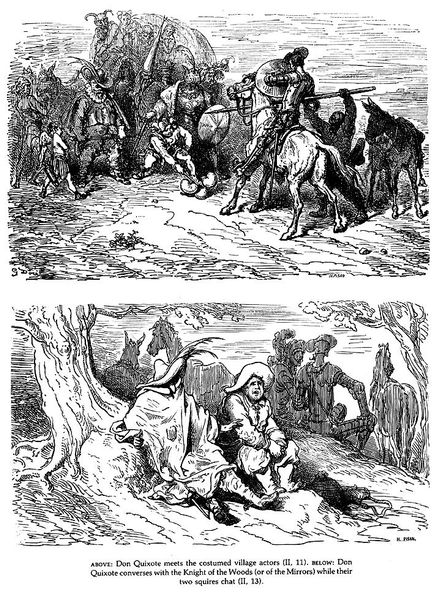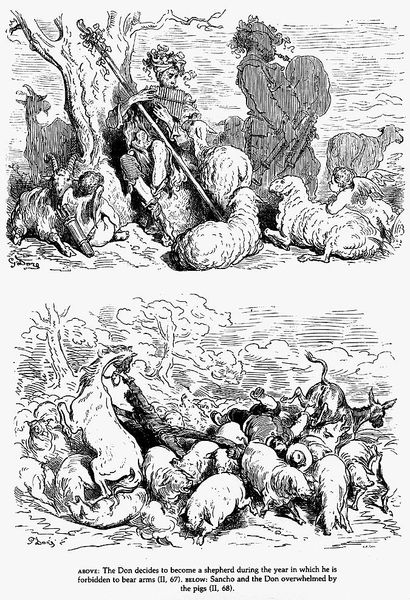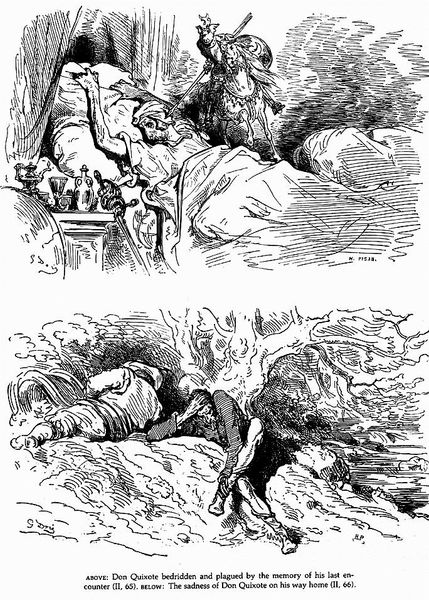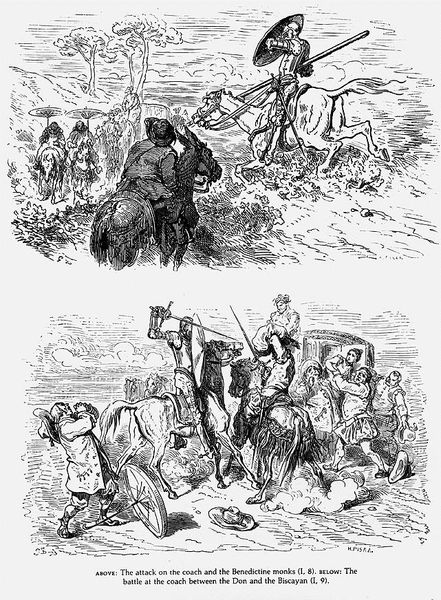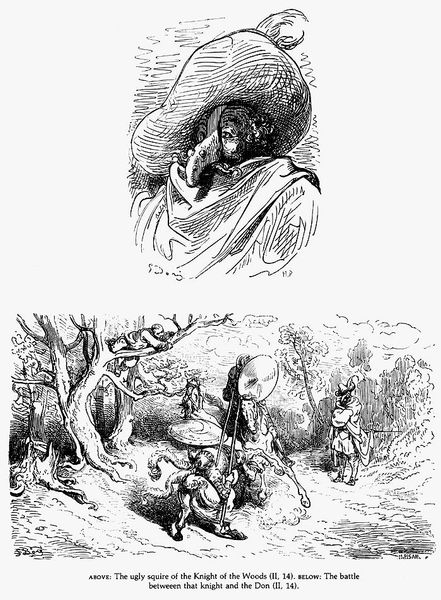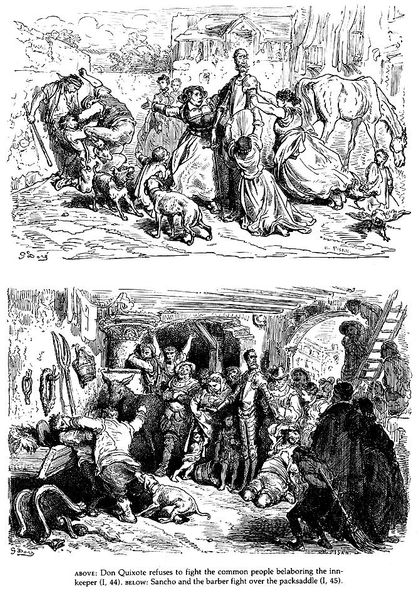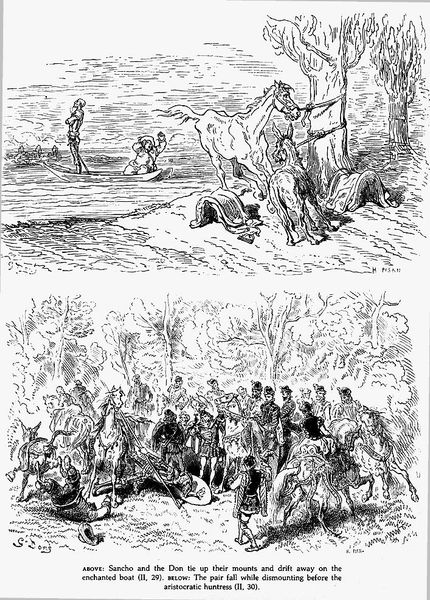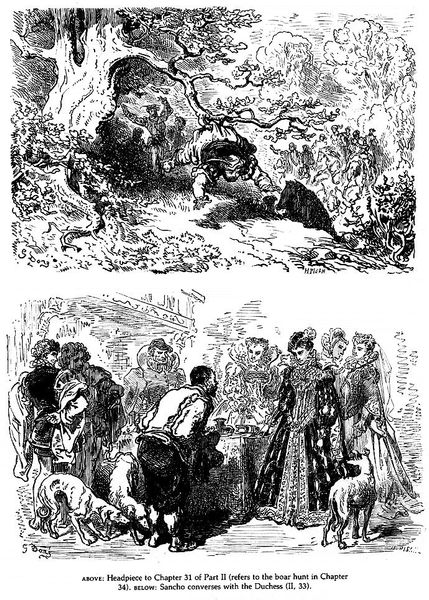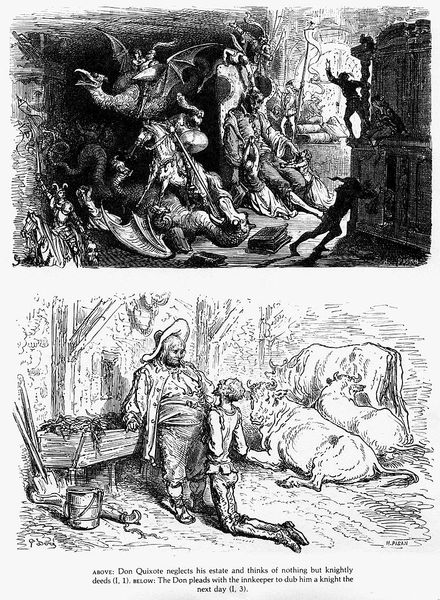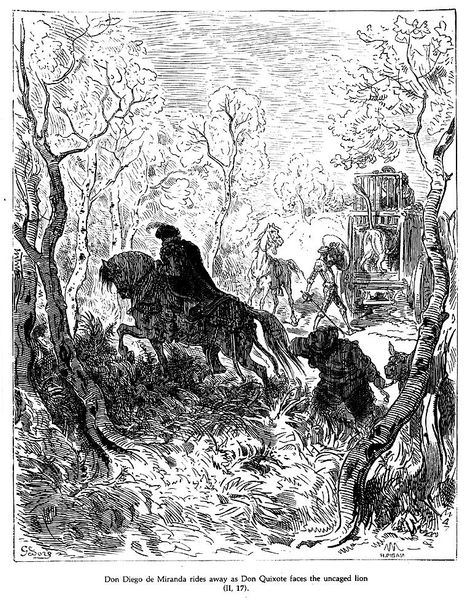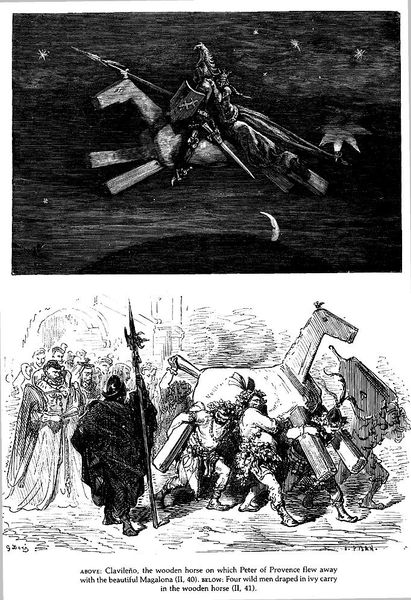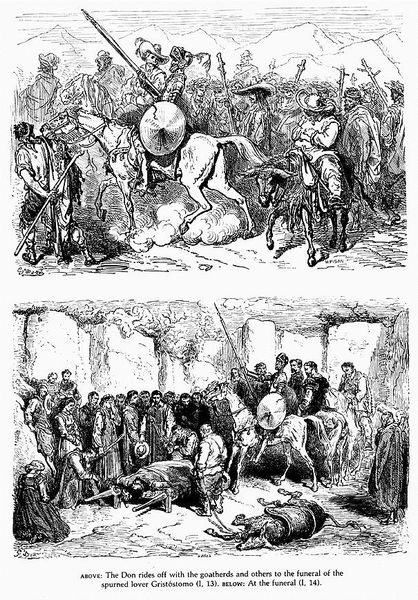
drawing, ink, pen
#
drawing
#
narrative-art
#
animal
#
pen illustration
#
landscape
#
figuration
#
ink
#
romanticism
#
horse
#
pen work
#
pen
#
history-painting
#
story boarding
Copyright: Public domain
Gustave Doré created these wood engravings of Don Quixote in nineteenth-century France, and they offer us a window into the social values of that time. Doré’s detailed illustrations helped to shape the visual culture surrounding Cervantes' novel. Look at how the characters are rendered: Quixote, with his gaunt frame, embodies a kind of romantic idealism, while Sancho Panza, stout and grounded, represents practicality. The images tap into long-standing class stereotypes within European culture. They speak to the ways that social roles can be self-imposed, and how individual identity exists in relation to others. Doré's work gained prominence during a period of increased literacy and burgeoning print culture, and we can research the history of illustrated books to learn more about the artist’s audience and the cultural function his images performed. What did the public expect from illustrations of classic literature? By exploring these questions, we can better understand the role of art in shaping social perceptions and cultural values.
Comments
No comments
Be the first to comment and join the conversation on the ultimate creative platform.
